- Region
- Águilas
- Alhama de Murcia
- Jumilla
- Lorca
- Los Alcázares
- Mazarrón
- San Javier
-
ALL AREAS & TOWNS
- AREAS
- SOUTH WEST
- MAR MENOR
- MURCIA CITY & CENTRAL
- NORTH & NORTH WEST
- TOWNS
- Abanilla
- Abarán
- Aguilas
- Alamillo
- Alcantarilla
- Aledo
- Alhama de Murcia
- Archena
- Balsicas
- Blanca
- Bolnuevo
- Bullas
- Cañadas del Romero
- Cabo de Palos
- Calasparra
- Camping Bolnuevo
- Campo De Ricote
- Camposol
- Canada De La Lena
- Caravaca de la Cruz
- Cartagena
- Cehegin
- Ceuti
- Cieza
- Condado de Alhama
- Corvera
- Costa Cálida
- Cuevas De Almanzora
- Cuevas de Reyllo
- El Carmoli
- El Mojon
- El Molino (Puerto Lumbreras)
- El Pareton / Cantareros
- El Raso
- El Valle Golf Resort
- Fortuna
- Fuente Alamo
- Hacienda del Alamo Golf Resort
- Hacienda Riquelme Golf Resort
- Isla Plana
- Islas Menores & Mar de Cristal
- Jumilla
- La Azohia
- La Charca
- La Manga Club
- La Manga del Mar Menor
- La Pinilla
- La Puebla
- La Torre
- La Torre Golf Resort
- La Unión
- Las Palas
- Las Ramblas
- Las Ramblas Golf
- Las Torres de Cotillas
- Leiva
- Librilla
- Lo Pagan
- Lo Santiago
- Lorca
- Lorquí
- Los Alcázares
- Los Balcones
- Los Belones
- Los Canovas
- Los Nietos
- Los Perez (Tallante)
- Los Urrutias
- Los Ventorrillos
- Mar De Cristal
- Mar Menor
- Mar Menor Golf Resort
- Mazarrón
- Mazarrón Country Club
- Molina de Segura
- Moratalla
- Mula
- Murcia City
- Murcia Property
- Pareton
- Peraleja Golf Resort
- Perin
- Pilar de la Horadada
- Pinar de Campoverde
- Pinoso
- Playa Honda
- Playa Honda / Playa Paraíso
- Pliego
- Portmán
- Pozo Estrecho
- Puerto de Mazarrón
- Puerto Lumbreras
- Puntas De Calnegre
- Region of Murcia
- Ricote
- Roda Golf Resort
- Roldan
- Roldan and Lo Ferro
- San Javier
- San Pedro del Pinatar
- Santiago de la Ribera
- Sierra Espuña
- Sucina
- Tallante
- Terrazas de la Torre Golf Resort
- Torre Pacheco
- Totana
- What's On Weekly Bulletin
- Yecla


- EDITIONS:
 Spanish News Today
Spanish News Today
 Alicante Today
Alicante Today
 Andalucia Today
Andalucia Today
article_detail
Spanish News Today Editors Roundup Weekly Bulletin Dec 20

TOP STORIES: "The world's most beautiful town has been named and it's in Spain" & "Brand-new Corvera airport flight route scheduled to start in 2025"
Hi all! This will be your last Editor’s Roundup Weekly Bulletin of the year before we take a couple of weeks off. We’ll be back with the next one on Friday January 10.
Until then, I figured we could continue our long-standing tradition (which started this time last year) of taking a look back over the year’s events and bigger news stories, if for no other reason than to realise just how lucky we are to have made it through in one piece!
There’s also a section on what has happened in Spain this week just gone, including the most beautiful town in the world being named as a tiny, hidden gem in the north of Spain, and the announcement of a brand-new flight route out of Corvera airport scheduled to begin in spring next year.
Also, at the end there’s a little surprise for all you crossword lovers out there…
Here we go:
Don’t look back in anger
Ah, 2024, and what a year it was. A leap year, the year of elections, the year when Oasis got back together.
As far as Spain goes, in January the year started off with a bang of other 90s boy band greatness when much excitement was created over the announcement that Take That would be performing at Murcia’s On festival for the summer. In a world where it increasingly seems that nostalgia sells better than original ideas (yes, I’m looking at you, Disney execs), it’s no surprise that the announcement caused a stir.
Murcia was also the scene of a tragedy that rocked the whole of Spain in January when the nation was moved by the tragic disappearance and eventual discovery of a young boy, Ivo Petrov, in the Mar Menor. The 16-year-old Bulgarian teen went missing after a boat trip with friends ended in catastrophe. Despite the survival of his two companions, Ivo’s inability to swim proved fatal; for weeks, divers combed the waters before finally locating his body, submerged a kilometre from the shore and three days of mourning were declared in Los Alcázares.
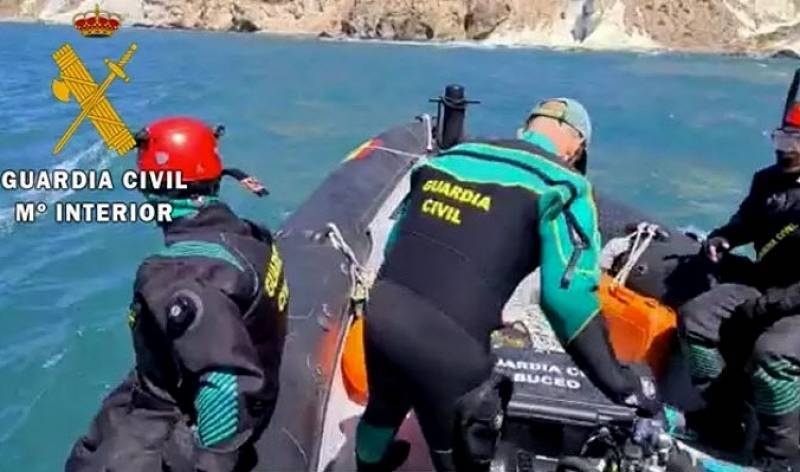
February had long-year enthusiasts LEAPING for joy for the first time since 2020. This was the month when extra details emerged from the EU about its ETIAS system, an upcoming electronic travel authorisation visa waiver system which was set to roll out in May 2025. In case you somehow missed all this, they’re basically going to charge Brits and non-EU citizens who are not resident in Europe around 7 euros for a visa waiver (very different from a visa, mind you) in order to get onto the continent for a holiday. But in order to be able to monitor and enforce this money-making scheme, they first have to digitise all the EU borders, something which is taking them a lot longer than expected. Over the course of this year, the EES system for digitally registering people going in and out of the Schengen area was repeatedly delayed and they’ve just recently settled on a “gradual” roll-out. But still, don’t expect the ETIAS to be ready for May 2025.
While ETIAS simmered on the back burner, Ryanair decided February was the perfect month to declare its intentions for the summer – eight shiny new routes out of Tenerife South. It was a move celebrated as a win for connectivity and sustainable tourism, though anyone who has ever scrambled for their seat during Ryanair’s boarding chaos might question that. The airline’s plans included linking Tenerife to a range of new destinations, from Knock in Ireland to Budapest in Hungary, giving both locals and visitors more options to satisfy their wanderlust.
Farmers, however, weren’t feeling so celebratory. In a scene reminiscent of the agricultural uprisings sweeping across Europe, Spanish farmers climbed aboard their tractors and rolled into city centres to demand better treatment for the rural sector. Unfair competition, rising costs, drought and European environmental rules imposed by the Common Agricultural Policy (CAP) had left many feeling trampled underfoot… and many drivers simply annoyed by the traffic jams they created on the roads with their tractoradas.
February’s closing act was as devastating as its protests were loud. You may recall the catastrophic fire that tore through a Valencia tower block, claiming nine lives and injuring more than a dozen others, including brave firefighters. The blaze spread with terrifying speed, a fact later attributed to the building’s polyurethane aluminium cladding – the very same material that turned Grenfell Tower into a deadly inferno in 2017.

In a grim sense of déjà vu, Spain was left grappling with tough questions about safety regulations, as families mourned their loved ones and others faced the arduous task of rebuilding their lives from scratch. And that was even before the later tragedy which hit Valencia later in the year.
March cam in like a lamb and went out like a lion; Easter, that reliably sunny interlude between winter and spring, was well and truly washed out this year. It was an earlier than usual Semana Santa this year, which barged in at the same time as Storm Nelson, drenching the country with rain, snow flurries and general misery. Holy Week processions, so central to Spain’s cultural calendar, were cancelled in many places as rivers of rain replaced the seas of candlelit devotees. As well as snow in Madrid, there were even white patches in Murcia and Andalucía, while the poor tourists who came over for a week-long break in the sun were left clutching soggy umbrellas instead of sun hats.
April, on the other hand, was a treat for stargazers and celestial enthusiasts. The so-called ‘Devil’s Comet’ made a rare appearance, coinciding (conveniently for those with decent binoculars) with a total solar eclipse. While the eclipse itself was only visible in North America, Spain still got a glimpse of the comet Diablo – a monstrous, horn-tailed beast of rock and ice that won’t swing by again this corner of the Milky Way until 2029. As far as cosmic spectacles go, it was a decent consolation prize, though anyone hoping for an eclipse here will need to hold out until March 2025. Patience, as they say, is a virtue.
Unfortunately, April was also shadowed by darker events. First, the grim discovery of a woman’s body in a field near Abanilla, Murcia, set police investigations into motion. Found with over 30 stab wounds and stripped from the waist down, the discovery of the victim sparked immediate fears of violence against women, especially undocumented sex workers. The lack of identification delayed her recognition, but suspicion soon turned to a man of North African origin residing in Alicante. The unsettling story deepened when it was revealed that the victim, Audrey Fang, was not a prostitute but a 39-year-old tourist from Singapore. Having travelled to Spain for a relaxing holiday, her trip ended in unimaginable tragedy. The Guardia Civil’s subsequent arrest of the prime suspect offered a sliver of resolution, but the sheer brutality of the crime lingered in the collective consciousness.
May was a busy month. As we approached the hotter summer months, scientists began to raise concerns over the ‘Mediterranean cauldron’ heating up far too early and far too much this year. By mid-May, sea temperatures near the Balearic Islands were already skirting 22ºC, an abnormal state of affairs that experts believe will become more common as the developing climate crisis stirs up storms while reducing oxygen levels in the Sea. In turn, this created tropical nights and intense storms in May.
There was a funny episode when a Spanish passenger about to board a Ryanair flight went viral for his absurd solution to a common problem. Faced with a 70-euro surcharge for his carry-on baggage being too big, the man tore the wheels clean off his suitcase to be able to squeeze it into Ryanair’s infamously small measuring cage. Cue applause from bemused onlookers and millions of views online, though the suitcase’s future now seems as bleak as the climate projections. Social media wasn’t entirely sympathetic, with critics pointing out that his DIY solution to save 70 quid would be offset by the fact that a new suitcase would cost him about the same amount anyway!
Un chico le rompe las ruedas a su maleta para no tener que facturarla con Ryanair y se ahorra 70€ pic.twitter.com/EK8YOAP9JF
— ceciarmy (@ceciarmy) May 20, 2024
At the end of May, there was a breakthrough a quarter of a century in the making for expats living in the tiny Alicante village of Llíber. For decades, hundreds of expats there – and in other towns around Alicante and Valencia – have unknowingly bought illegal homes built on dodgy licences, only to find themselves trapped in bureaucratic purgatory. Thanks to years of tireless lobbying and some little-known legal tweaks, the first wave of houses has at long last achieved preliminary approval for legalisation. It’s no small feat when you consider the scale of the problem – 200,000 illegal homes across the Valencia region. What happened in Llíber may just provide a blueprint for sorting this mess out elsewhere, and hopefully it won’t take another 20 years.
Speaking of unexpected developments, June brought us the unexpected glory of oleander trees. For whatever reason, people were incredibly interested in the article we wrote about “why Spain plants oleander trees in the middle of motorways”. Oleander is a plant most drivers hardly notice but which, incredibly, is a quiet lifesaver across Spain’s motorways. These hardy bushes form natural barriers, soaking up the sun and stopping vehicles from crossing into oncoming traffic. As long as they’re trimmed to avoid the perilous ‘tunnel effect’, these flowering warriors will keep Spanish motorways among Europe’s safest.
Also in June, Murcia announced its ambition to become the new Hollywood, with plans to create Europe’s largest film studio. Backed by Universal and British company Stage Fifty, the 120-million-euro Murcia Film Studios aims to put the region on the cinematic map. With its idyllic weather and sprawling landscapes, the project promises jobs, investment, and a shot at turning Murcia into Spain’s audiovisual powerhouse.
Meanwhile, in a story straight out of a heist film, a British hacker was arrested in Palma after allegedly pocketing $27 million in Bitcoin. The FBI and Spanish police joined forces for the cinematic takedown at Palma Airport. Unfortunately for the hacker, real life rarely ends as neatly as the movies.
🚩Detenido en #PalmadeMallorca un joven #ciberestafador responsable del ataque informático a 45 empresas de #EEUU
— Policía Nacional (@policia) June 14, 2024
➡️Era el líder de un grupo organizado dedicado al robo de información de empresas y de #criptomonedas y llegó a hacerse con el control de 391 #bitcoins por valor de… pic.twitter.com/cHzlsC2JZ4
Finally, the deep sea offered its own drama when two enormous and incredibly rare cañabota sharks washed ashore in Alicante. Measuring nearly five metres, these ancient scavengers stunned scientists, who rushed to collect samples. Whether their deaths are a grim signal of environmental woes or mere coincidence remains unclear.
Moving into the summer proper, July kicked things off with a sporting weekend that will go down in history. The UEFA Euro 2024 introduced The Beatles’ ‘Hey Jude’ to a new generation and culminated in an England vs. Spain final, much to the delight of many English people here in Spain. In the end, Spain snatched it with a 2-1 win, but UK expats here felt that they would have won either way.
Then, just hours later, Carlos Alcaraz, Spain’s golden boy of tennis, casually defended his Wimbledon title by steamrolling Novak Djokovic in straight sets. Alcaraz’s dazzling victory gave Spain its first Channel Slam winner, cementing his place alongside the legendary Rafael Nadal, who retired later in the year.

Meanwhile, Spain’s motorways were proving far less unifying than its sports teams. The Ministry of Transport sparked fury in Murcia, Orihuela Costa and Málaga by scrapping AP-7 tolls… but only around Alicante city. At first it was only going to be for a 3-month trial period, but then was extended until mid-February 2025. Locals further south watched in disbelief as their long-held dreams of toll-free travel remained stubbornly unfulfilled. Orihuela Costa residents seethed at the government’s refusal to address their “historic” grievances, while Marbella’s toll road earned the dubious accolade of being the priciest in the country. By November, there was at least some movement on the Costa del Sol, where discussions began over discounts for students and frequent motorists on the AP-7, at least as a temporary measure until the coastal train project can get out of the station.
But while Spain was embroiled in toll politics, British expats were having their own moment of empowerment. Thanks to the scrapping of the ‘15-year rule’, UK citizens living abroad could finally vote again in a general election in their motherland. Whether or not they managed to keep up with the postal ballot process, or in fact really cared to use their vote to participate in what was largely seen as an election with a foregone conclusion of bringing Labour back to power, is debatable.
The August summer holidays brought, unsurprisingly, relentless heat. But it was so severe, so stifling in places, that it was a sharp reminder that Spain, like much of the planet, is at the sharp end of a rapidly unfolding climate crisis. Record-breaking temperatures fuelled wildfires across the country, exacerbated by the parched, rain-starved countryside. NASA waded in, and the scientists’ warnings were clear: climate change isn’t coming; it’s already here, turning summer from a season of leisure into one of ever-increasing peril.
Tourists visiting Murcia for the summer, however, looked beyond the successive waves of heatwaves towards the shoreline as The Telegraph ranked Playa del Calblanque beach as the second-best in the whole world for wildlife, describing its pristine sands, secret coves and impressive birdlife as a nature-lover’s dream. Not bad for a hidden gem nestled within a relatively lesser-known corner of the Med. Spain’s other beaches didn’t fare quite so well, with just two more making the cut: Playa de La Concha in San Sebastián for its bustling atmosphere and Mallorca’s Cala Tuent as a secluded paradise. Which makes it all the more impressive that little ol’ Murcia made the list.
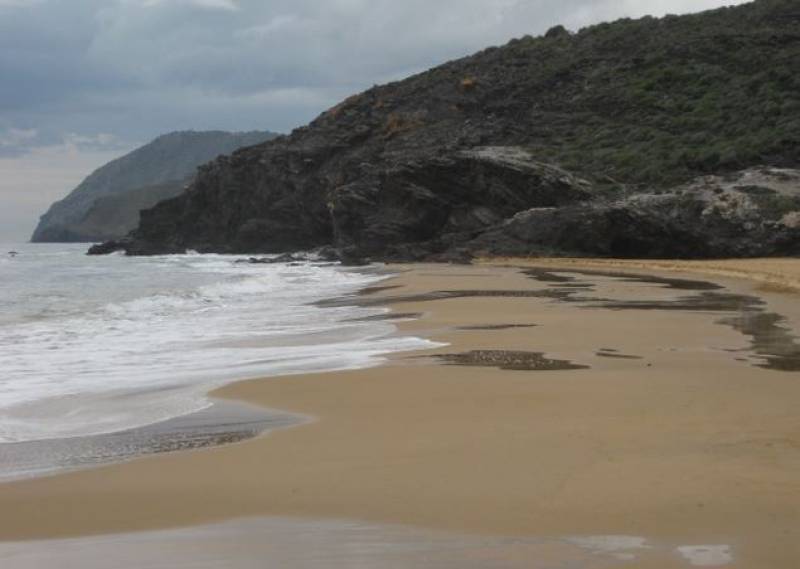
There was also some confusion at airports across Spain and the EU this summer. Just when we thought we were finally about to see the back of the rule that limits fliers to 100ml of liquids in their hand luggage, the EU decided to do a U-turn and reintroduce the rule before they ever really took it away. It’s much-touted state-of-the-art C3 scanners were supposed to be magical machines that would bring an end to faffing around with toiletry bags, but were ultimately deemed inadequate at detecting the potential threat that 150ml bottles of lotion can present. Airports that had forked out millions on the technology were left fuming while passengers merely gave a collective sigh of resignation.
In September, it was announced that one airport in particular – Murcia’s old San Javier Airport – was going to be the subject of another reinvention. Closed in 2019 to make way for the shiny Region of Murcia International Airport in Corvera’s (a decision that couldn’t have been timed worse, given it coincided with global pandemic-induced travel bans), San Javier has since played host to a parade of ambitious ideas, none of which quite stuck. From losing out on becoming Spain’s space agency hub to briefly flirting with being a sanctuary for endangered Mar Menor species, the old airport’s latest role is shaping up as a satellite technology centre. A budget of just under 655,000 euros is on the table for its transformation into a tech-friendly space for security and defence start-ups, complete with meeting rooms and the obligatory green spaces that seem to be a part of every new project. Whether this latest scheme actually gets off the runway or stalls at the gate, we’ll just have to see.
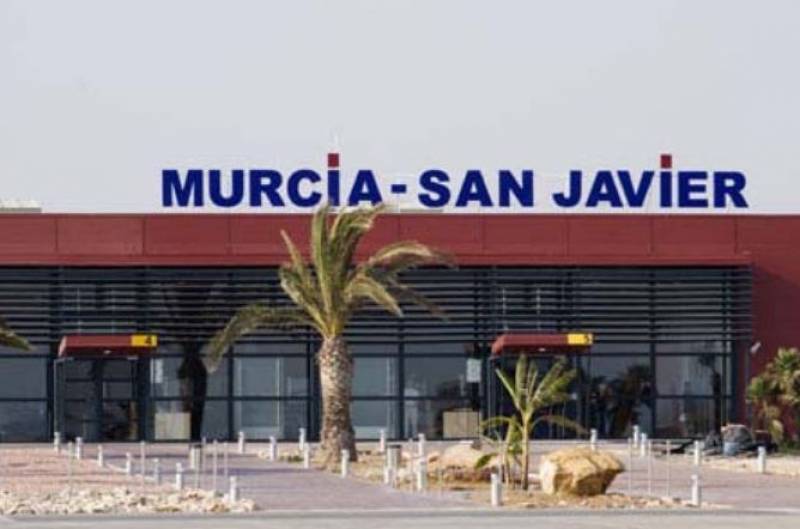
Also in September of this year, residents across Spain were treated to a stinker of a news story: mandatory increases in their rubbish bills. Until now, bin charges have been discreetly tucked into property tax payments, but this convenient arrangement is being dumped. Thanks to an EU directive set to land by April 2025, local councils must now pass on the full cost of waste management to residents, and the numbers are grim. Households could see their garbage bills soar by as much as 150%, and in some places, rates are expected to skyrocket by over 300%. Amid grumbles of overflowing bins and councils struggling to keep up, the “polluter pays” principle is here to stay, even if it will leave many feeling unfairly taxed for simply existing. Several councils have begun to introduce brown bins for compostable waste as a way of avoiding such harsh tax increases, while some consolation may also come in the form of recycling bonuses, though precisely how authorities plan to monitor eco-friendly behaviour remains as clear as a landfill in August.
On the subject of communal living, Spanish property owners may soon find their community meetings going digital, assuming a proposed update to the Horizontal Property Law makes it through. The amendment seeks to modernise the somewhat archaic process governing how homeowners in shared urbanisations and resorts interact by bringing in the possibility of video calls for meetings, taking digital minutes and simplified voting procedures. Community presidents everywhere are hoping these changes will streamline everything from collective decision-making to resolving neighbourly disputes; anything that helps to cut back the heap of paperwork in a land of bureaucratic purgatory is welcome.
Of course, all of these niggling concerns were momentarily washed away – quite literally – by Spain’s storm of the century. In late October, a DANA weather system unleashed torrential rains on the country’s eastern and southern coasts, with the Valencian Community suffering the worst. Homes and garages were flooded. Business and livelihoods were destroyed. Entire towns were swallowed by water. Transport ground to a halt as train tracks and roads were ripped from their roots. Unscrupulous looters took advantage of the chaos. The official death toll is 221, though teams continue to search for the remaining three missing people, even now, nearly two months later. Criticism of authorities’ delayed warnings only added fuel to the storm’s destructive fire, and Spain’s weather agency, Aemet, is now facing charges of reckless homicide. As always in Spain, political finger-pointing abounds more than useful political action, and it was largely the charity organisations and leagues of volunteers who donated their time, money, physical labour, food and other goods to helping those poor people affected. Storms of such a massive magnitude, scientists warn, are only likely to become more common in the coming years, amplified by a Mediterranean that is growing worryingly warm. But at the same time there were so many parts of this tragedy that could have been avoided with better flood defences and town planning that didn’t rely on building urban centres on a floodplain.
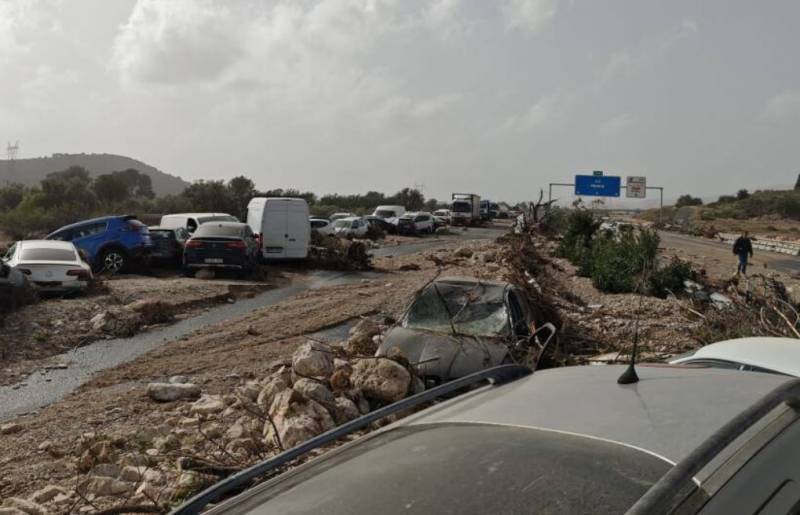
In the aftermath of the devastation, Spain has responded with both promises and policies. Prime Minister Pedro Sánchez pledged hundreds of millions of euros in relief to the victims and the affected areas, while the government introduced the (nearly) groundbreaking concept of “climate leave”, as yet relatively unknown outside of Canada. Once it is fully introduced, workers who are unable to access their jobs due to extreme weather or catastrophic events can now take up to four days of paid absence. It’s a progressive nod to the reality of climate-induced disruptions, and includes legislation to ensure that businesses devise action plans for weather-related risks.
There was another important global election in November, which resulted in Donald Trump clawing his way back to the White House, and this time he amazingly didn’t complain that the votes had been rigged. Is it just me or does it feel like, even when he wasn’t president, we’ve been seeing this guy’s face everywhere for the last 10 years non-stop? Aside from being exhausting, especially seeing him buddy up to that equally creepy Elon Musk, Trump’s resurrection has those in Europe quaking in their zapatos, and Spain isn’t exempt. His ‘America First’ mantra is rattling NATO nerves, particularly given his insistence that member states pay up or face the cold shoulder. Meanwhile, his grand (and entirely vague) declaration to “fix the Ukraine war in 24 hours” through what one can only assume is a Vladimir Putin-friendly handshake deal has alarm bells ringing from Brussels to Madrid. And if that wasn’t enough to sour the mood, Trump’s flirtation with trade tariffs – 10% across the board and up to 60% for Chinese goods – could hammer Spain’s key export sectors, particularly in automotive and technology. He is due to be inaugurated as president for the second time on January 20, 2025, so that’s something to look forward to in the new year.
While we’re on the subject of a rough road ahead, motorists in Spain are despairing over the fact that 2025 looks set to see motorway tolls jump up yet again. Rising inflation coupled with the end of a government cap on increases for road tolls mean it will be pricey year on the roads, as everything else continues to get more expensive, too. I mean, the only really surprising news story would be if we reported that the cost of living was going down, but it’s not. Actually, some government-managed motorways might stay frozen for a while, but the privately owned ones are all likely to see a hike in tolls, and the EU has just warned Spain this week that it must implement these dual carriageway tolls or risk hefty fines from the European Commission, whose directive is aimed at recovering road maintenance costs and slashing CO2 emissions.
Still on the topic of roads, the DGT has been busy making changes for 2025 that might actually improve matters in a small way. Under the new regulations, bikers will soon be able to use hard shoulders during traffic jams, provided they behave (that means no more than 30kmh). Drivers stuck on snowy or icy motorways will also be confined to the right-hand lane to make way for emergency vehicles and snowploughs. Sensible stuff, even if it won’t make slogging through gridlocked dual carriageways any more thrilling.
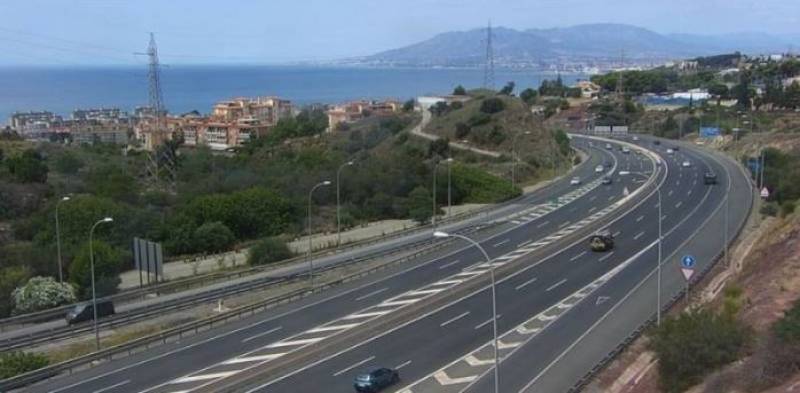
Meanwhile, in one of the more bizarre and tragic moments of the tail-end of the year, two British tourists sadly lost their lives on the La Manga motorway when a glider boat reportedly linked to drug trafficking detached from its trailer, decapitating the pair and causing a multi-vehicle pileup that injured several other people. The off-road vehicle’s driver fled the scene, leaving the Guardia Civil with an ongoing investigation into whether the alleged drug boat might have been taken out of police custody at the time of the accident. There’s sure to be updates to this story in the coming month.
To round off the year, there’s good news for retirees. It’s not only expenses that are on the rise, as the government is determined to keep incomes in line with the increasing cost of living. With that in mind, Spanish pensions are set to rise by 2.8% in 2025, bringing some financial relief to those seniors battered by inflation. The government, keen to ensure pensioners’ purchasing power isn’t eroded, will bump up average monthly payments by around 40 euros, with the maximum pension increasing by nearly 90 euros. However, there’s a catch: the retirement age is going up as well. Retiring at 65 will now require at least 38 years and three months of contributions, and those who fall short of this will have to wait until 66 years and eight months of age to be able to retire. That table will continue to shift over the coming years, up until 2027. Why is it that as time goes on, everything goes up and up and up, except the things we want to stay up as we get older?
So, with all that going on in 2024, now it’s over to you. What are your predictions for 2025? Whatever the year ends up bringing, one thing is for sure – we’re unlikely to be given the luxury of boredom at any point!
What’s happened this week in Spain

While it might feel like winter has already arrived with the recent drop in temperatures, the official start is not until this weekend. According to the National Astronomical Observatory, winter 2024 in this hemisphere officially begins on Saturday December 21, at precisely 10.21am, when the winter solstice occurs.
This marks the shortest day of the year and the official start of the coldest season.
Even though it might feel like an endless winter, it’s actually the shortest season of the year. According to the National Geographic Institute, winter 2024/2025 will last just 88 days and 23 hours.
Care for a fun fact? The winter solstice can fall on different dates depending on the year. In 2080, it will occur on December 20 and way back in 1903, it even fell on December 23.
It’s fairly typical for airports to reduce their flight schedule during the winter months when holidays are less in demand and Corvera is no exception – in the past few weeks it has scaled back from 23 destinations to just nine.
This slow-down will give Murcia Region International Airport (AIRM,) to give it its formal title, a little breather before what’s expected to be a bumper 2025.
Getting in on the game early is Canary Islands airline Binter, which has just announced a brand-new route between Murcia and Tenerife.
The new Corvera-Tenerife North-La Laguna City Airport (TFN) direct flights will begin on March 30, 2025 and operate twice a week in each direction.
This is in addition to the usual Binter flights from Murcia to Gran Canaria which run all year round.
Binter is determined to make its mark in mainland Spain, launching four other destinations in 2025: Valencia (VLC), with four weekly frequencies, and San Sebastián (EAS), Pamplona (PNA) and Granada (GRX), all with two weekly flights each.
If train journeys are more your speed, you’ll be glad to hear that the (very) long-awaited route between Andalucía and Madrid, operated by French company Ouigo, will finally get up and running in the New Year.
From Thursday January 16, Ouigo will transport passengers from Córdoba, Sevilla and Malaga to the Spanish capital, and those planning to travel can now snap up fares for as little as 9 euros each way.
To begin with, there will be two daily trains between Madrid and Sevilla, with departures at 7.40am and 3.14pm from Puerta de Atocha and at 11.14am and 7.44pm from Santa Justa.
The Madrid-Málaga route will have the same frequencies. The trips will leave at 7.19am and 3.23pm from Puerta de Atocha, and at 11.15am and 7:50pm from María Zambrano, with a journey time of around three hours, depending on the route.
From January 25 there will be three runs from Sevilla (the additional trail will leave at 7.38am).
In the run-up to Christmas, there always seems to be families coping with unspeakable hardships and losses and unfortunately, rich or poor, none of us are immune to these sad events.
 Last Saturday, December 14, Isak Andic Ermay, the founder and chairman of the global fashion brand Mango, died after a devastating 150-metre fall while hiking near Barcelona.
Last Saturday, December 14, Isak Andic Ermay, the founder and chairman of the global fashion brand Mango, died after a devastating 150-metre fall while hiking near Barcelona.The 71-year-old businessman was on an excursion with family members in the Collbató saltpetre caves, located within the Montserrat mountain range.
Andic’s contributions to the fashion industry and his commitment to excellence have left an enduring legacy. He is survived by his wife and son.
Back in Murcia, the Mazarrón Town Council has just given the green light to process building work licenses for the first new construction project in Camposol after a long planning suspension.
At the council’s governing board meeting on November 22, approval was granted for the application to proceed with building licenses and planning permission for 23 new properties.
If successful, this will be the first project for multiple new-build properties in Camposol in more than 15 years.
The 23 “tourist properties” will be located in Polígono D25, bordered by Calles Ajedreas, Violetas and Esparraguera. Polígono D25 already has around 40 properties and a communal swimming pool, completed by 2007.
With less than a week to go to Christmas Day, there’s plenty happening in and around Alicante to get people into the festive spirit, and this year, Orihuela Costa is pulling out all the stops.
One of the most popular events for both locals and tourists is the traditional Christmas Brass Band that returns to Smiling Jacks bar on the Cabo Roig Strip every year. Next Monday December 23, the talented musicians will be belting out all of the Christmas classics from 5.30pm and you can expect a right good sing-along.
There will also be lots of spot prizes on the night, along with Bailey’s shots, mince pies and plenty of other tasty treats.
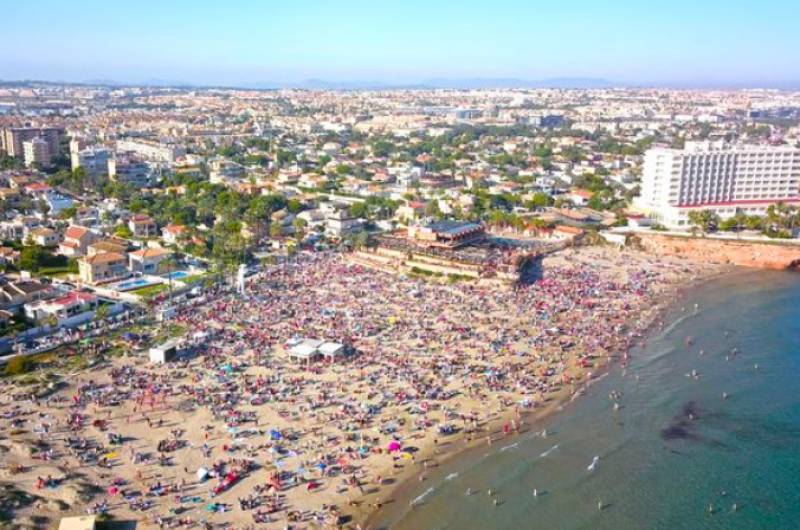 Meanwhile, Cala Bosque beach in La Zenia will be hosting its traditional Christmas Day beach party. It is the largest in Europe, drawing thousands of revellers from across the globe.
Meanwhile, Cala Bosque beach in La Zenia will be hosting its traditional Christmas Day beach party. It is the largest in Europe, drawing thousands of revellers from across the globe.What started more than a decade ago with a handful of adventurous expats has grown into an unmissable celebration of sun, sand and holiday spirit. Today, the event attracts people from over 100 nationalities, with British residents and visitors leading the festive charge.
Forget roast dinners – barbecues are the name of the game here. Partygoers arrive prepared with tables, chairs and even portable beer fridges powered by generators. It’s a feast and fiesta rolled into one, where everyone brings their own unique flair to the celebration.
This year, the festivities kick off at 10am and the classical Decapo Orchestra will hit the beach at 11am, filling the air with joyful holiday tunes.
Whether you’re singing along, dancing or simply soaking up the atmosphere, it’s a Christmas experience you’ll never forget.
Finally, Rupit i Pruït, a charming Catalan village officially formed in 1977, has this week earned the title of the most beautiful town in the world.
Nestled in the picturesque countryside of northern Spain, this hidden gem boasts a population of fewer than 300 residents and a rich history spanning more than 1,000 years.
The town’s timeless appeal lies in its preservation of natural and architectural beauty. Stone houses, cobbled streets and the iconic wooden suspension bridge pay homage to its storied past.
Walking trails from the village lead to historic landmarks such as the 17th-century Santa Magdalena church, lovingly restored after desecration during the Spanish Civil War.
Rupit i Pruït is also a haven for nature enthusiasts. The nearby Salt del Sallent waterfall, plunging down 100 metres, is Catalonia's tallest and a favourite among hikers exploring the region’s forests and cliffs. The Collsacabra landscape, with its dramatic gorges and lush wilderness, offers breathtaking vistas.
Whether you’re drawn to its fascinating legends, such as the witch Tecla, or its serene beauty, Rupit i Pruït is a must-visit destination for travellers in northern Spain. A nice idea for a getaway next year!

You may have missed this week…
- Murcia photo of the year 2024.
Every month throughout 2024, members of the Los Alcázares Digital Camera Club (LADCC) have been actively taking photos from around the world on a wide range of topics. This month, when they were asked to vote on their favourite photo from all of the monthly winning images, this is the winning image they chose for the whole year. - Spain consumer rights watchdog to sue Airbnb for not removing unlicensed holiday lets from its platform.
Spain’s General Directorate of Consumer Affairs has launched legal proceedings against Airbnb for failing to remove thousands of advertisements for unlicensed holiday accommodations from its platform. - Donate a book to the DANA relief fund and get free a ticket to Terra Natura Murcia this Christmas.
Terra Natura Murcia zoo and park has organised a solidarity book collection this Christmas to help rebuild the libraries affected by the DANA in Valencia: all children from 3 to 12 years old who hand in a story or a children's book at the entrance to the park between Saturday December 21 and Monday January 6 will have free access! - Suspected murderer in Spain caught on Google Maps loading body into car.
An image collected by Google Street View in Spain’s Soria of a man loading a body into the boot of his car has gone viral on the internet after it was linked to the disappearance of a Cuban man who had been missing for months in the area. - 5 typical tasty treats for Christmas in the Region of Murcia.
Among the typical ingredients at this time of year are almonds, nougat and plenty of sugar, and these examples have been chosen by the regional tourist board as the most representative tastes of Christmas in the Costa Cálida for you to try this festive season!
And last but not least… I did this for my Christmas 2022 edition of the bulletin but I didn’t include one last year because it actually takes a while to create. So, without further ado, your biannual Christmas Cryptic Crossword:
And that’s all we’ve got time for this year. Thank you so much for your support this year, and we look forward to – as the Spanish say – más y mejor next year. Your next edition of the Spanish News Today Editor’s Roundup Weekly Bulletin will be on Friday January 10.
Have a wonderful Christmas and a Happy New Year!
Contact Murcia Today: Editorial 000 000 000 /
Office 000 000 000
















